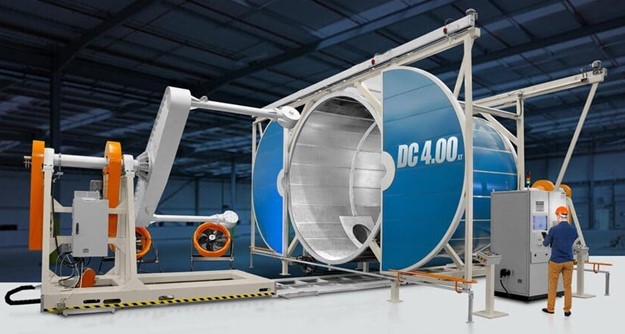Rotational molding, commonly known as "rotomolding," is a innovative manufacturing process that is used for creating hollow plastic items. From storage tanks to playground equipment, this process is a blend of simplicity and advanced technology, allowing for unmatched design flexibility. But what is the science that is what makes Rotomolding so efficient?

The Process at a Glance
Rotational molding begins with a mold that is loaded with powdered plastic material. This mold is heated, then rotated simultaneously across two axes perpendicular to each other inside an oven. This constant rotation ensures that the molten plastic evenly coats the walls inside the mold. The mold is then cooling, which solidifies it into a hollow, seamless structure.
The absence of external pressure is a defining aspect of this method, which ensures that the plastic is able to settle and spreads out evenly with no stress. This is the main difference from other molding methods such as blow molding or injection molding.
Why is Rotational Molding Efficient?
The theory behind rotational molding is founded in the polymer and heat transfer. During the heating phase, the plastic powder melts and bonds to the mold as it rotates through gradual controlled, controlled rotations. This results in a the same thickness of the wall and eliminates the chance of weak areas.
Cooling plays an equally important part in the overall process. In order to maintain a steady flow of air and water temperature, manufacturers can prevent shrinkage or warping. Not to mention ensure your final item maintains its original shape and structural strength.
According to statistics, rotational molding is able to produce parts with up to 99percent material efficiency, which reduces consumption and making it an eco-friendly choice. Furthermore, it offers unmatched versatility, enabling production of complex and large designs, without sacrificing quality.
Applications That Showcase Its Potential
Rotational molding caters to numerous industries, thanks to its versatility. Whether you need durable outdoor furniture or robust industrial containers, this technology delivers both functionality and cost-effectiveness. It also allows multi-layered designs, allowing companies to blend different materials to enhance characteristics like UV resistance or thermal insulation.

The process of molding by rotation is a testimony to how material science and engineering work together to create our future. Because it can simplify production while maintaining high precision it's not surprising that this process is still a hot topic in discussions about manufacturing.
